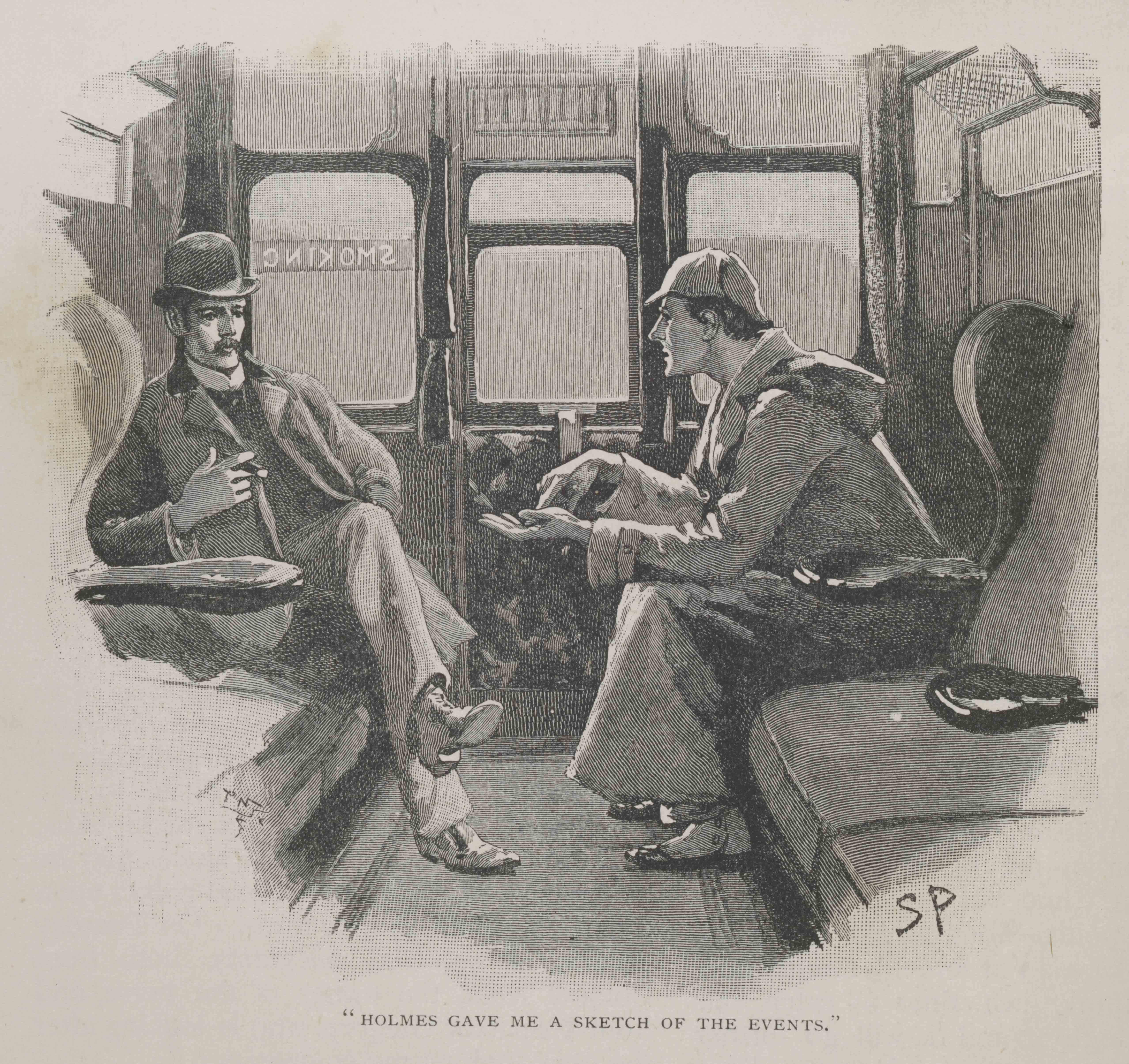
Written by guest blogger Arup K. Chatterjee.
It is a well acknowledged fact that poisons play a central role in the Sherlock Holmes stories. It is little known, however, what were Arthur Conan Doyle’s key sources and inspirations for introducing exotic poisons from far reaches of the British Empire. In my article, I make a case for why we should seriously consider India to be an important backdrop, in general, to the Holmes stories, and Indian poisons and corresponding toxicology as the primary data that triggered Doyle’s imagination.
I take up the case of the fictional poison, Radix pedis diaboli, from Doyle’s short story “The Adventure of the Devil’s Foot” (1907), which is said to have originated in the Ubangi country in West Africa. I argue that, while the fictional provenance of the poison is Africa, its properties are, in fact, derived from the famous Indian pharmakon, aconite (Aconitum ferox and Radix aconiti indica). The striking resemblance between the devil’s foot and aconite calls for a rigorous analysis of the Orientalizing gaze that the likes of Doyle cast on India and other colonies.
I provide this analysis by offering a historiography of the aconite and the importance it occupied in Victorian toxicological imagination. Indian pharmakons like aconite, cannabis, hemp, strychnine, and among others, were exhaustively studied by Victorian toxicologists and used to instantiate examples of Indian anthropology. These pharmakons underwent a Manichean transformation in the British colonial imagination. Thus, ancient Indian treatises and knowledge of pharmakons were overtaken by a colonial epistemology. Their medicinal properties were gradually overshadowed by their poisonous uses, leading to a vilification of indigenous Indian populations and tribes, finally culminating in the legislation of the Indian Poisons Act (1904), which sought to regulate sale of classified substances.
Doyle’s use of poisons in The Sign of the Four (1890) and “The Adventure of the Devil’s Foot” plays out against the shifty backdrop of India, whether as the site of the Great Mutiny or camouflaged as the tribes of Africa. Being a medical practitioner himself, Doyle evidently was well-read in the toxicology of the age. His fictional poisons serve not only as a source for studying the literary imagination of the age but also understanding what the Victorians thought about poisons, particularly about Indian poisons and, by extension, about India.
The least that can be done to acknowledge this historiography is to have greater representation of India’s geographical and cultural mores in the televised adaptations of the Holmesian canon. Also, the hypothesis of how, during the Victorian phase of Empire, Indian and other colonial pharmakons became poisons in the colonial imagination suggests the need for an epistemic restraint when we talk of legislations on psychoactive substances, whether to legalize or regulate their usage in contemporary times.
About the Author
 Dr. Arup K. Chatterjee is a Professor of English at O.P. Jindal Global University. He is the Founding Chief Editor of Coldnoon: International Journal of Travel Writing & Travelling Cultures (which he ran from 2011 to 2019). He has authored The Great Indian Railway Saga (Roli, 2022), Indians in London: From the Birth of the East India Company to Independent India (Bloomsbury, 2021), The Great Indian Railways (Bloomsbury, 2018) and The Purveyors of Destiny: A Cultural Biography of the Indian Railways (Bloomsbury, 2017). He has contributed articles on history, literature, culture, and politics to magazines such as The Hindu, Hindustan Times, The Conversation, Scroll, DailyO, Huffington Post, The Caravan, India Today, and The Wire Science, among others, and has been interviewed by Asian Review of Books, Aaj Tak Radio, All India Radio, and BBC India Radio. He is the author of over 70 peer reviewed, international papers and articles in the mainstream press.
Dr. Arup K. Chatterjee is a Professor of English at O.P. Jindal Global University. He is the Founding Chief Editor of Coldnoon: International Journal of Travel Writing & Travelling Cultures (which he ran from 2011 to 2019). He has authored The Great Indian Railway Saga (Roli, 2022), Indians in London: From the Birth of the East India Company to Independent India (Bloomsbury, 2021), The Great Indian Railways (Bloomsbury, 2018) and The Purveyors of Destiny: A Cultural Biography of the Indian Railways (Bloomsbury, 2017). He has contributed articles on history, literature, culture, and politics to magazines such as The Hindu, Hindustan Times, The Conversation, Scroll, DailyO, Huffington Post, The Caravan, India Today, and The Wire Science, among others, and has been interviewed by Asian Review of Books, Aaj Tak Radio, All India Radio, and BBC India Radio. He is the author of over 70 peer reviewed, international papers and articles in the mainstream press.
His article, “Aconite in Victorian Tropical Toxicology What You Wanted to Know about the Indian Poison but Were Afraid to Ask Sherlock Holmes,” appears in the Canadian Journal of Health History Volume 39 Issue 2.
Comments on this entry are closed.